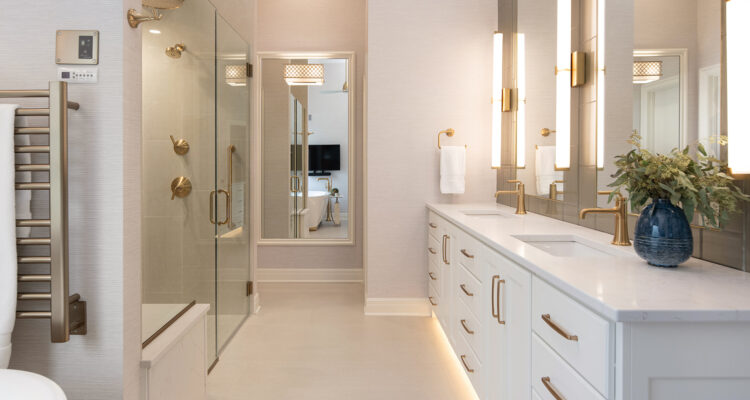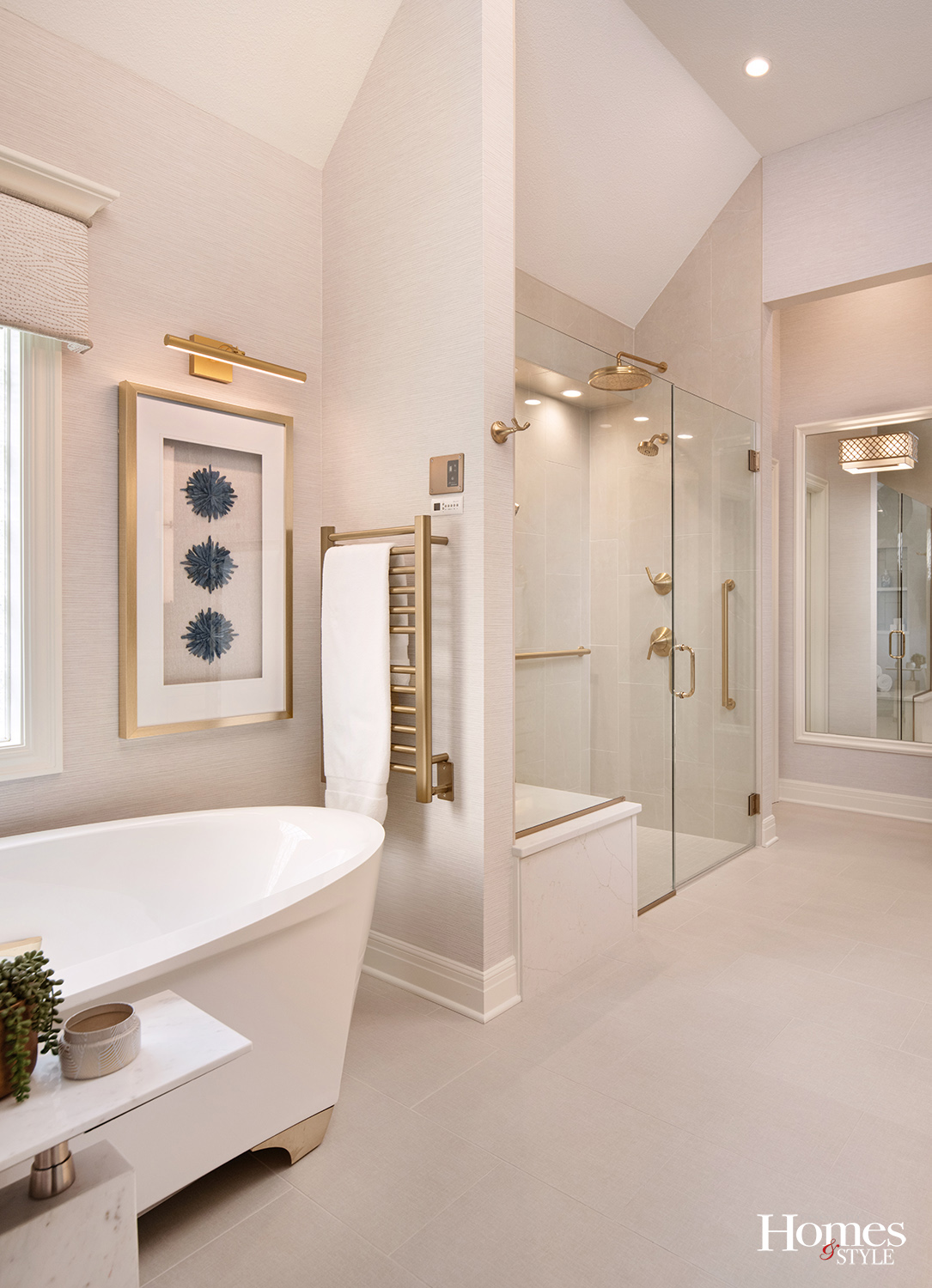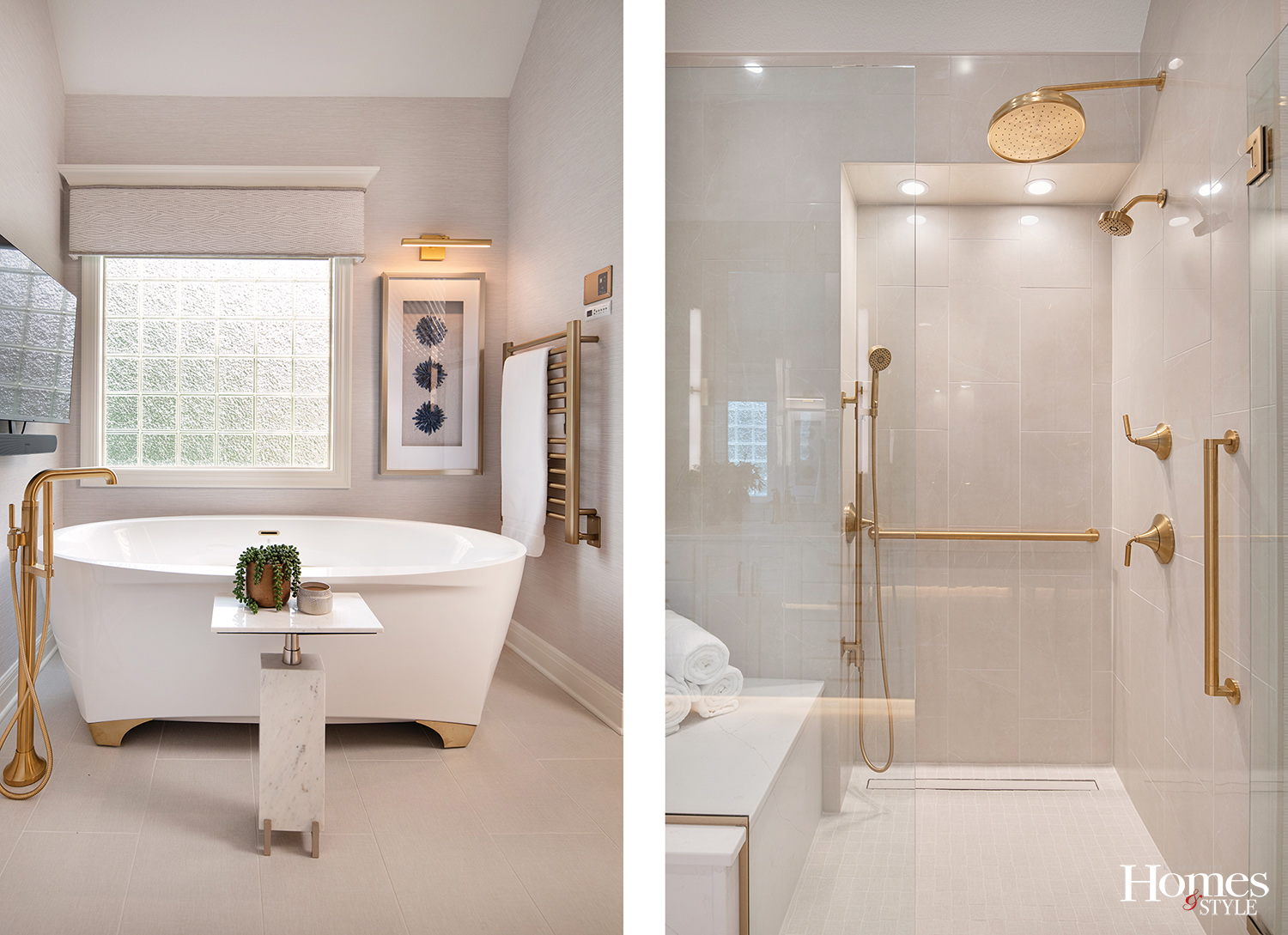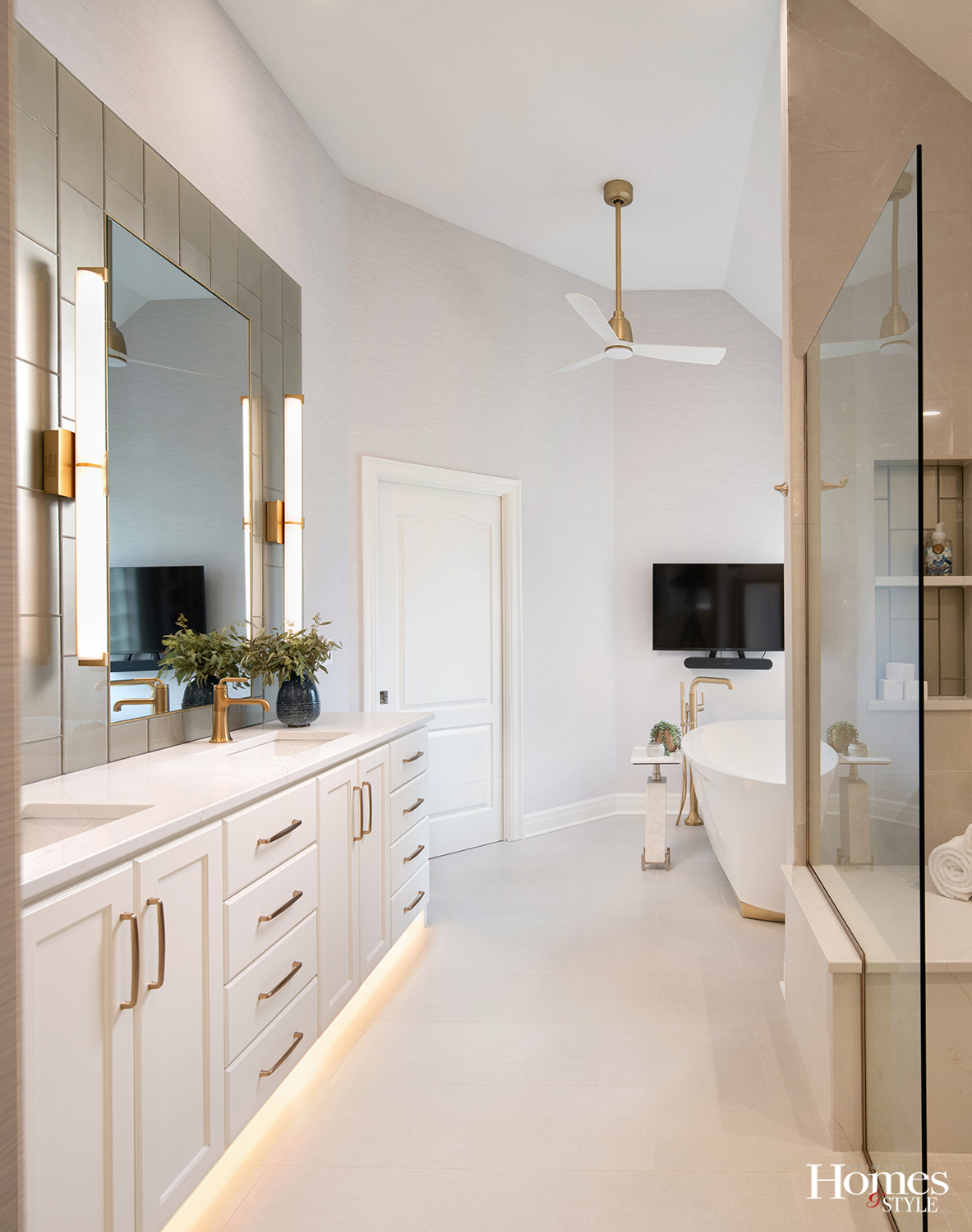Accessibility and luxury intertwine in this Leawood bathroom renovation that challenges design norms.
Story by Ann Butenas / Photography by Matt Kocourek
In a sunlit bathroom in southern Leawood, Kansas, a remarkable transformation has taken place. What was once a standard bathroom with accessibility challenges, including an inaccessible tub blocked by cabinetry, a cramped shower with a threshold to step over, and inadequate lighting, has become a testament to how accessible design can be both functional and beautiful.
The renovation began with necessity, as the homeowner experienced medical changes requiring immediate modifications. But the design team approached the project with a philosophy that transcends mere accommodation: accessibility as sophisticated design.
“We can make any room look beautiful, but if it doesn’t function effortlessly, we have failed in our purpose,” explained Brenda Anderson, ASID Allied, CLIPP, member NKBA and Principal Interior Designer with Interior Elements & Design. This guiding principle resulted in a space that anticipates both current and future needs, allowing the homeowners to live without the constant thought of “what if.”
The bathroom’s aesthetic is a study in refined elegance: a serene palette of creamy whites with brushed gold accents creates a timeless appeal. But look closer, and you’ll discover how every element serves dual purposes of beauty and accessibility.
The linen-textured floor tile, for instance, increases grip to prevent slips while adding visual interest through texture. Polished glass tiles with gold metallic backing on the backsplash weren’t chosen just for their dramatic flair, as they bounce light throughout the space, addressing the homeowner’s need for abundant illumination due to vision challenges.
Lighting became a central focus of the renovation. Oversized 40-inch sconces flank the vanity, and every light fixture in the bathroom has been placed on dimmers, allowing for personalization. This thoughtful approach addressed the different needs of the couple.
For nighttime safety, motion sensors trigger undercabinet toe-kick lighting, creating a subtle path to the water closet while adding a warm ambient glow. The combination of natural light from windows and strategically placed fixtures, along with reflective surfaces, ensures the space feels bright and open without appearing institutional.
Dexterity challenges were addressed with thoughtful hardware choices: large cabinet pulls and a single-handle vanity faucet minimize the effort needed for daily tasks. In the shower area, valve selection prioritized ease of operation. The barrier-free shower includes a seat and handheld showerhead, while the tub features internal handles, bubbles (not jets), and a heated backrest for comfort.
The tub filler was strategically positioned on the far left for easier access, exemplifying how every detail was first considered for accessibility and then selected to align with the client’s desire for classic, timeless design. This careful balancing act between meeting physical needs and creating an aesthetically pleasing environment is evident throughout the space.
What makes this renovation particularly impressive is how the design team transformed potential limitations into style statements. The textured wallpaper adds visual interest while also providing subtle tactile guidance. The increased reflective surfaces that help with visibility also add sparkle and dimension to the room.
Perhaps most striking about this renovation is how seamlessly safety features blend with luxury elements. The handrails don’t announce themselves as clinical additions but integrate naturally with the room’s sophisticated design language. The overall effect is a space that feels like a spa retreat rather than an accessible bathroom.
This project raises an important question: Why do we modify homes for accessibility rather than making it the standard in home construction? Thoughtful initial design, such as placing light switches lower, installing zero-threshold showers, and considering maneuvering space, creates environments that work better for everyone, regardless of age or ability. When accessibility is built in from the beginning, specialized modifications become minimal if needs change.
As this bathroom update demonstrates, universal design principles benefit all users. The lower light switches that accommodate wheelchair users also provide better ergonomics for standing adults. The non-slip flooring that prevents falls also adds textural interest. The motion-activated lighting that guides nighttime navigation also creates ambiance.
What makes this bathroom truly successful is its rejection of the false dichotomy between beauty and accessibility. Instead, it embraces the idea that the most thoughtful design considers human needs of all kinds and as a result creates spaces that are simultaneously more comfortable, safer, and more beautiful for everyone who uses them.
This bathroom stands as an elegant argument that accessibility isn’t just a special feature or afterthought. Instead, it’s fundamental to excellent design. By breaking away from the cold, clinical look often associated with accessible spaces, this renovation proves that creating environments that accommodate diverse needs can result in spaces that are not only more functional but also more sophisticated and inviting for everyone.
Resources
- Designer: Interior Elements & Design
- Contractor: Superior Renovation & Design
- Plumbing: Kitchen & Bath by Briggs
- Tile: ASMI
- Countertop: CKF – Silestone
- Lighting: Interior Elements & Design
- Electrician: CH Electric & Technology
- Plumber: Tom Gieske










